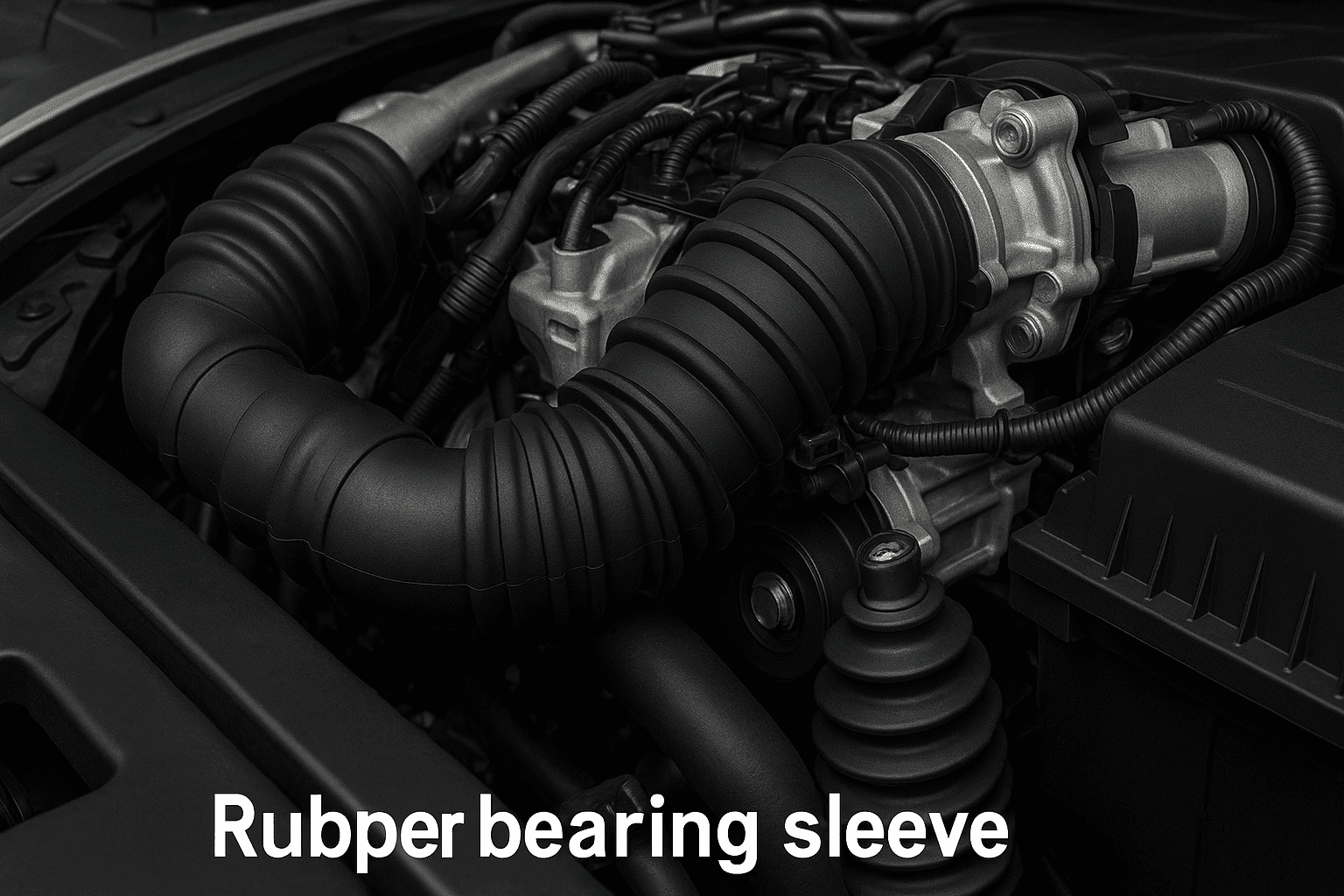Rubber bearing sleeves are small but crucial components used in a wide range of mechanical and industrial systems. Their main purpose is to absorb vibration, reduce friction, and protect shafts and housings from wear. Because of their elasticity and chemical resistance, rubber bearing sleeves are widely used in automotive, machinery, marine, and electrical industries.
1. What Is a Rubber Bearing Sleeve?
A rubber bearing sleeve is a cylindrical sleeve made from natural or synthetic rubber materials such as NBR (nitrile rubber), EPDM, or silicone. It is typically installed between a rotating shaft and a housing or bearing seat.
Its elastic structure compensates for misalignment, absorbs vibration, and prevents metal-to-metal contact — which extends the lifespan of the entire system.
2. Automotive Applications
In the automotive sector, rubber bearing sleeves are used in suspension systems, engine mounts, steering columns, and transmission supports.
They help minimize vibration and noise generated by engines and road impact. For example, in drive shafts, the rubber sleeve acts as a flexible connector that allows smooth torque transfer while reducing wear and heat buildup.
Additionally, modern EVs (electric vehicles) rely on high-performance rubber sleeves to ensure quiet operation and stable performance under high torque conditions.
3. Industrial Machinery
In heavy machinery and manufacturing equipment, rubber bearing sleeves are used to protect bearings and shafts in pumps, compressors, conveyors, and hydraulic systems.
They provide excellent sealing and cushioning effects, preventing oil leakage and contamination from dust or moisture.
Rubber sleeves also help compensate for thermal expansion or slight alignment errors that occur during continuous operation — a common need in industrial automation lines and precision equipment.
4. Marine and Water Applications
Because of their resistance to saltwater and corrosion, rubber bearing sleeves are widely used in marine propeller shafts, water pumps, and offshore machinery.
In ship stern tubes, the rubber sleeve acts as a protective bearing liner, ensuring smooth shaft rotation even in harsh underwater conditions.
EPDM and neoprene sleeves are often preferred for such environments due to their superior resistance to ozone, UV, and seawater degradation.
5. Electrical and Electronic Equipment
Rubber bearing sleeves are also applied in electrical systems as insulating and damping components. They isolate vibrations in fans, motors, and generators, preventing noise and protecting sensitive electronic parts.
Silicone rubber sleeves, in particular, offer excellent dielectric properties and high-temperature stability, making them suitable for electric motor assemblies and industrial automation controllers.
6. Customization and Material Selection
Different applications require different rubber formulations.
- NBR (Nitrile Rubber): Oil and fuel resistance for automotive and machinery use.
- EPDM: Weather and water resistance for outdoor or marine applications.
- Silicone: Heat resistance and electrical insulation for electronics.
- Neoprene: Balanced performance against aging, UV, and chemical exposure.
Manufacturers like CDX provide OEM customization options, including size, hardness (Shore A), color, and bonding with metal or PTFE sleeves, ensuring a perfect match for each project’s mechanical and environmental requirements.
7. Conclusion
Rubber bearing sleeves play a vital role in maintaining the stability, durability, and efficiency of mechanical systems. Whether in automobiles, marine vessels, or factory machinery, they serve as the unsung heroes of vibration control and protection.
For engineers and manufacturers seeking durable and customizable solutions, partnering with an experienced rubber bearing sleeve manufacturer ensures both performance and reliability — especially when operating in demanding environments.





























